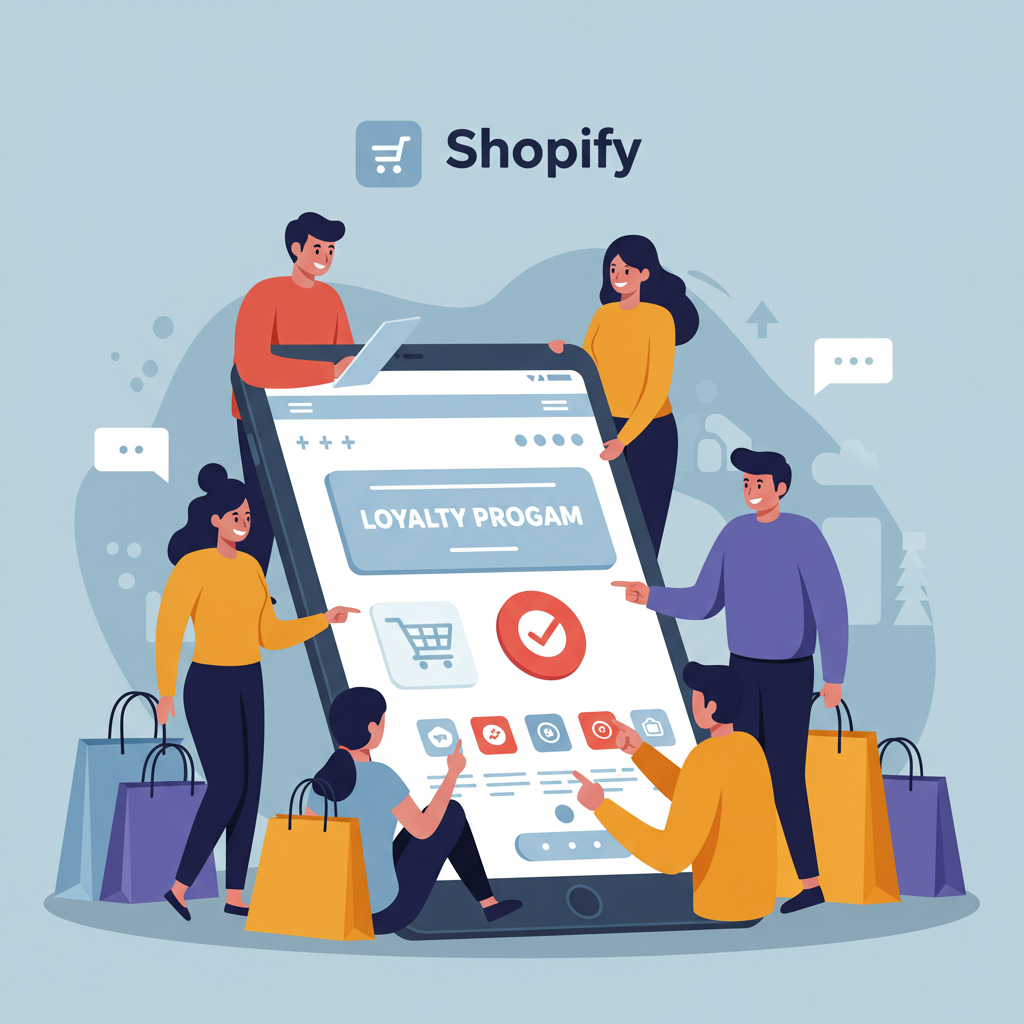Discover how a strategic loyalty program can transform your Shopify store, boosting retention, average order value, and customer lifetime value.
Hello fellow Shopify merchants! Today, I want to share some insights that I believe are absolutely critical for sustainable growth in our competitive e-commerce landscape. We’re going to talk about loyalty strategies.
In my experience, simply acquiring new customers is becoming increasingly expensive. The cost of advertising continues to rise, and standing out in a crowded market is a constant challenge.
This is precisely why focusing on customer retention and building lasting relationships has become not just a good idea, but an essential pillar of any successful Shopify store.
Think about it: your existing customers already know your brand, they’ve trusted you with their money, and they’ve experienced your products or services. They are your most valuable asset.
A well-executed loyalty program isn’t just about giving discounts; it’s about fostering a community, showing appreciation, and turning one-time buyers into lifelong advocates.
I’ve seen firsthand how a robust loyalty strategy can dramatically impact key metrics like customer lifetime value (CLTV) and average order value (AOV).
So, what exactly is a loyalty strategy in the context of Shopify? It’s a structured approach to reward customers for their continued engagement and purchases with your brand.
It’s about creating incentives that encourage repeat business, whether that’s through points, exclusive access, or special perks.
Let’s dive into some of the core benefits I’ve observed when implementing these programs. Firstly, increased customer retention is paramount.
When customers feel valued and see tangible benefits for sticking with you, they are far less likely to jump ship to a competitor.
Secondly, a good loyalty program can significantly boost your average order value. Customers might add more items to their cart to reach a higher reward tier or earn more points.
Thirdly, it’s a powerful tool for word-of-mouth marketing. Happy, rewarded customers are your best brand ambassadors, eager to share their positive experiences.
I’ve found that referrals from loyal customers often convert at a much higher rate and cost less to acquire than those from traditional advertising.
Now, let’s explore the different types of loyalty programs you can implement on your Shopify store. The most common is a points-based system.
Customers earn points for every purchase, which they can then redeem for discounts, free products, or exclusive items. It’s straightforward and easy to understand.
Another effective model is a tiered program. Here, customers unlock different levels (e.g., Silver, Gold, Platinum) based on their spending or engagement.
Each tier offers progressively better rewards, creating a sense of aspiration and encouraging customers to spend more to reach the next level.
I’ve also seen success with VIP programs, which offer exclusive access to new products, early sales, or special events for your most dedicated customers.
Community-based loyalty, where customers earn rewards for engaging with your brand on social media, writing reviews, or participating in forums, is also gaining traction.
So, how do you actually implement this on Shopify? The good news is that the Shopify App Store is brimming with excellent loyalty program apps.
Apps like Smile.io, LoyaltyLion, and Yotpo Loyalty & Referrals offer comprehensive solutions that integrate seamlessly with your store.
When choosing an app, I always recommend looking for one that offers customization options, easy integration, and robust analytics to track your program’s performance.
Key elements of a successful loyalty program, in my opinion, include clarity and simplicity. Customers need to easily understand how to earn and redeem rewards.
The rewards themselves must be genuinely valuable and desirable to your target audience. Don’t just offer token discounts; think about what truly motivates your customers.
Communication is also vital. Regularly remind customers about their points balance, upcoming rewards, and how close they are to reaching the next tier.
Personalization takes your loyalty program to the next level. Tailor rewards and communications based on customer purchase history and preferences.
For instance, if a customer frequently buys skincare, offer them a discount on a new skincare product or early access to a related launch.
Measuring the success of your loyalty program is crucial. I always track metrics like repeat purchase rate, customer lifetime value, average order value for loyalty members, and redemption rates.
These metrics help me understand what’s working, what isn’t, and where I can optimize the program for better results.
A common pitfall I’ve encountered is making the program too complicated or the rewards too difficult to attain. This can lead to frustration and disengagement.
Another mistake is not promoting the program effectively. It needs to be visible on your website, in your emails, and even on your product pages.
Consider integrating gamification elements, like bonus points for completing certain actions or limited-time challenges, to make the experience more engaging.
Don’t forget to integrate your loyalty program with your other marketing efforts. Use email marketing to announce new rewards or remind customers of their points.
Leverage social media to highlight your most loyal customers or promote exclusive VIP perks. It creates a holistic customer experience.
Ultimately, a loyalty strategy isn’t a one-time setup; it’s an ongoing process of refinement and adaptation. Listen to your customers and evolve your program based on their feedback.
I truly believe that investing in customer loyalty is one of the smartest decisions you can make for your Shopify store’s long-term prosperity.
It transforms transactional relationships into meaningful connections, fostering a community around your brand that will drive growth for years to come.
What do you think about these strategies? Have you implemented a loyalty program on your Shopify store, and what have your experiences been? I’d love to hear your thoughts!






